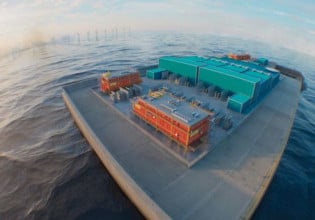Infineon Technologies Unveils Secondary Side Regulated, Constant Voltage Flyback Controller
The XDPL8219 enables power factor correction to > 0.9, and total harmonic distortion of 10% or less.
Aimed at dual stage LED drivers, Infineon Technologies’ XDPL8219 is a flyback controller featuring secondary-side regulation (SSR), a high power factor and a constant output voltage. For maximum efficiency and to minimize EMI, it operates in quasi-resonant mode (QRMn). Active burst mode (ABM) capability eliminates audible noise at low power and enables the device to draw under 100 mW at no-load standby.
The XDPL8219. Image courtesy of Infineon
The XDPL8219 determines if it’s source power is AC or DC and adjusts its switching for best performance. For AC inputs, a high power factor of 0.9 or greater is enabled, and total harmonic distortion is below 10% over a wide load and input ranges. For DC input, the switching frequency is controlled to reduce EMI over the entire operating range.
The XDPL8219 can be configured via its UART pin and through this interface, the device transmits operating information to an external control device. This information includes input voltage and Input voltage loss, temperature, line frequency and the last error code.
What is a Flyback Controller?
A flyback converter is a switched-mode power supply, powered by either an AC or a DC source. Depending largely on the turns ratio of the transformer, it provides isolated DC output at a higher or lower potential than the source.
Typically rated at 100 watts or less, one of its great advantages, as illustrated below, is low parts count.
Basic diagram of a Flyback Converter. Image courtesy of Texas Instruments
For a DC source, when the MOSFET switch is turned on, a negative voltage is presented at the diode's anode, reverse biasing it, so no current flows.
When the MOSFET turns off, the current rapidly collapses and, due to formula V = L di/dt, a voltage in the opposite direction appears in the transformer’s primary. Thus, a voltage opposite to the original voltage is generated in the transformer’s secondary. This forward bypasses the diode, and current flows through it to the output.
The MOSFET’s switching is controlled to maximize circuit performance.
Applying the XDPL8219
The unit operated from an AC input of 90 to 305 Vrms or from a DC input range 127 to 431 VDC.
To ensure a fast output voltage rise with minimal overshoot, it incorporates a built-in 600 V start-up cell along with a specialized start-up sequence.
Modern LED lighting needs very specific voltage and current input to operate at it’s greatest potential. Factors include flicker control, dimming and power efficiency. A high power factors is also a more and more important goal.
As such, the typical application of the XDPL8219, although providing a well regulated output voltage, should not be used to directly drive LEDs.

Block Diagram of the XDPL8219. Image courtesy of Infineon
Rather, it should provide the input to a second stage, a DC-DC switching regulator to also assure a constant current input to the LED luminary.
Physical and Environmental Specifications
The XDPL8219 is qualified for industrial applications according to the pertinent tests of JEDEC47/20/22. The unit is housed in a DSO-8 package. The minimum junction temperature is -40℃. The maximum temperature, for switching frequencies ≤ 186.4 kHz and ≤ 247.2 kHz are 150℃ and 125℃, respectively.
Getting to Market Faster
Infineon offers programming tools, which include a PC-based GUI interface to aid in programming the XDPL8219’s various parameters. The REF-XDPL8219-U40W is a combination of 40 watt reference design and reference board to aid designers.






